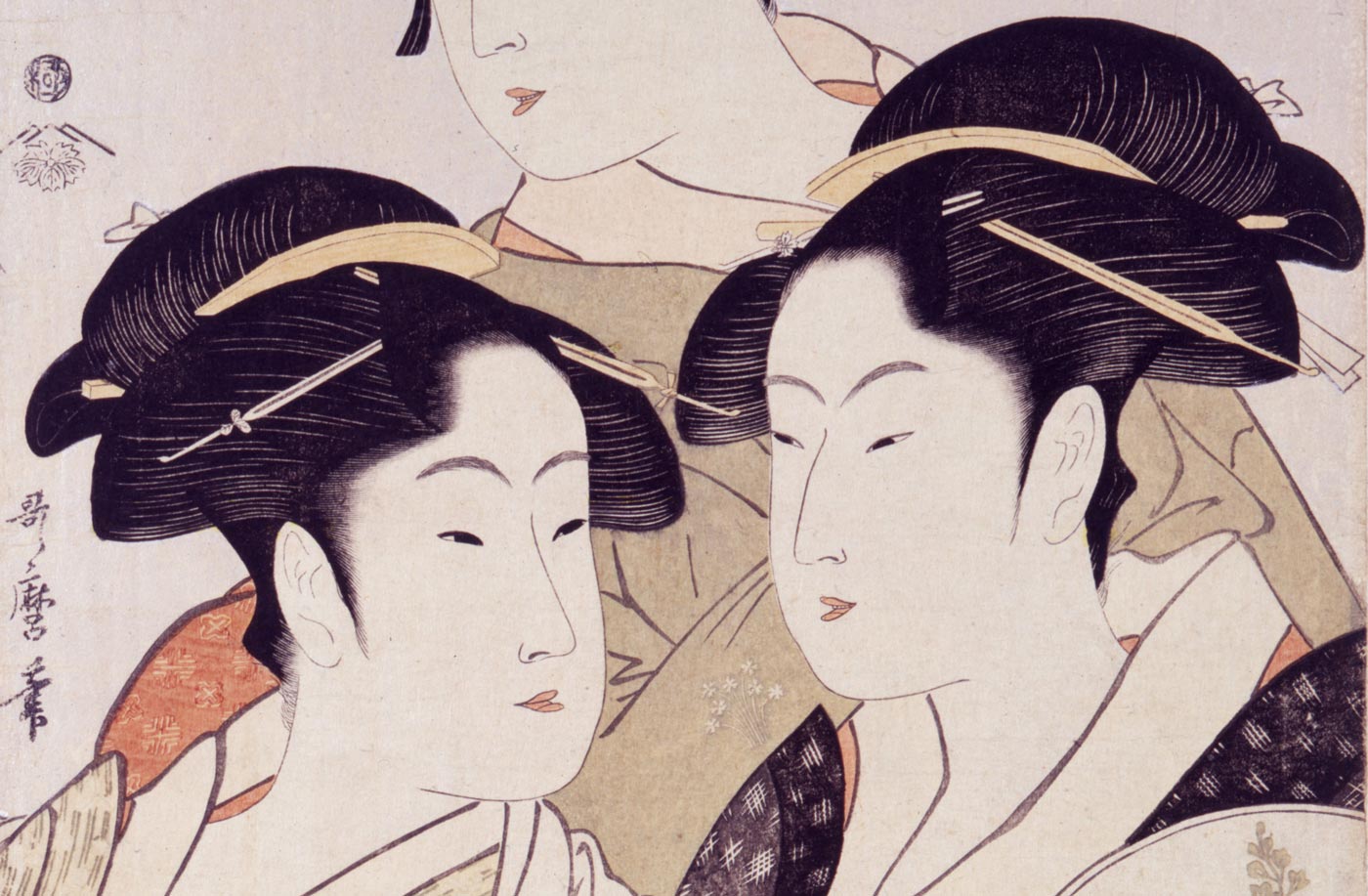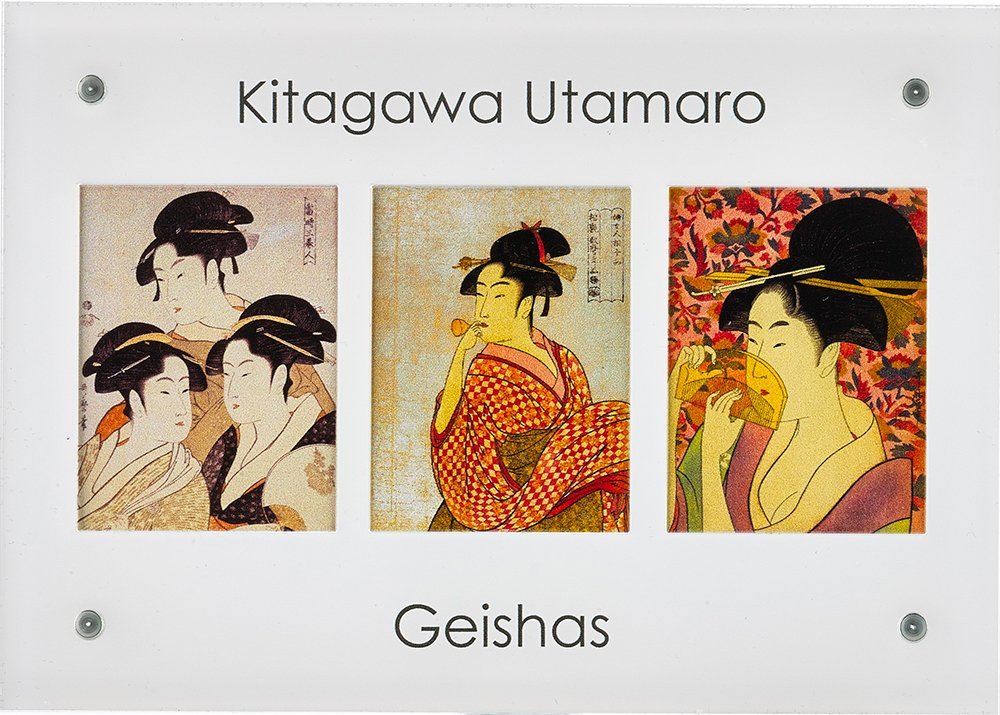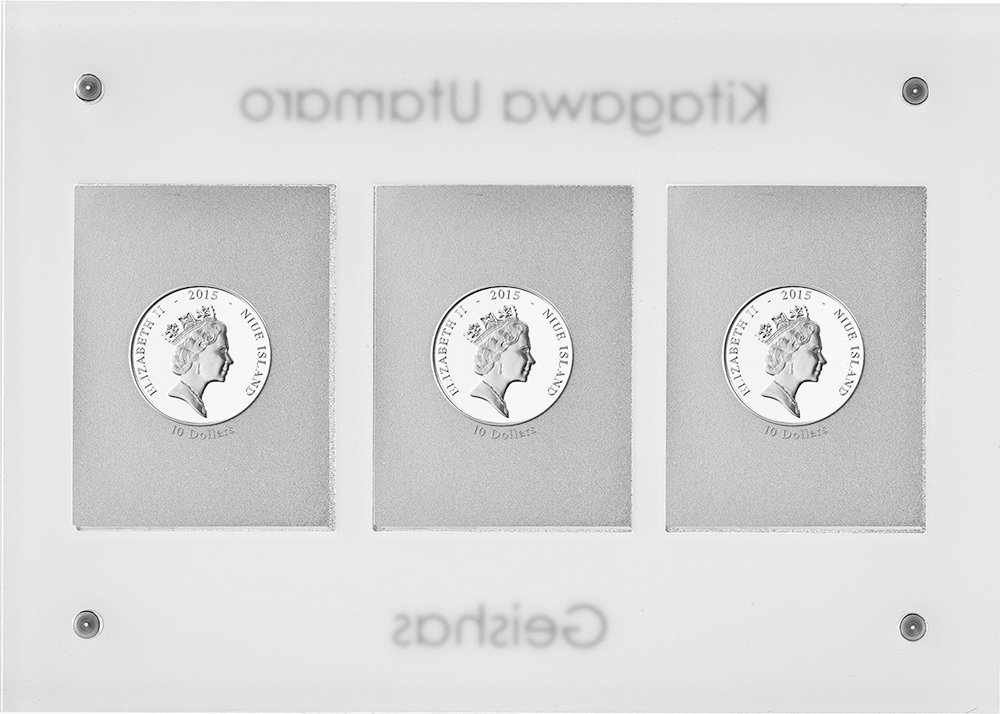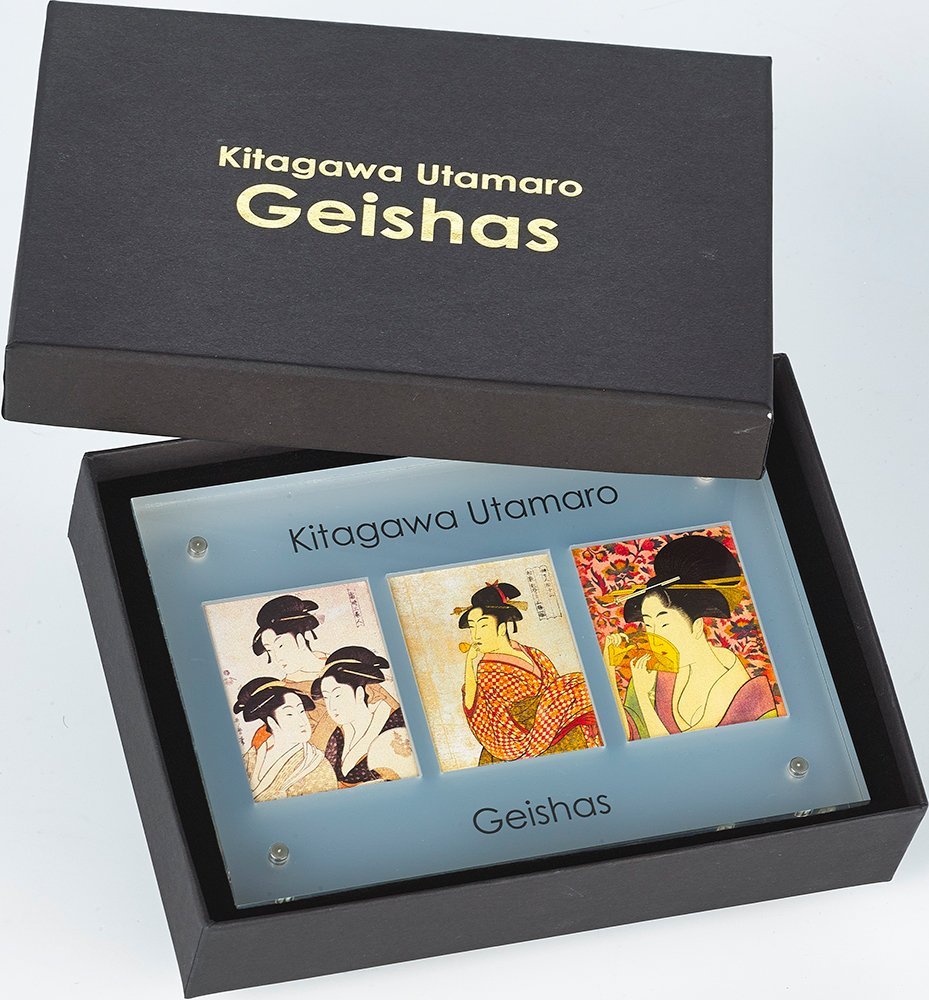There are many sets of coins released each year that quietly drift onto the market without any fanfare, are stocked by just a few dealers, and then quietly disappear. Amongst them are some really unique and distinctive releases featuring subjects, themes or designs not touched by the major mints. It’s our intention to increase coverage of these niche sets so that more of you get to see what’s out there away from the mainstream. Our first 2015 wander into this market is for a new set of silver coins depicting the work of eighteenth century Japanese woodblock artist Kitagawa Utamaro, so obviously it doesn’t get more niche than that…
Known for his bijin-ga, portraits of beautiful Geisha’s, using the ukiyo-e genre of woodblock printing, the art is different, beautifully realised and utterly Japanese. The artist was quite prolific, producing more than 2,000 prints during his time and the selection chosen for this set include some of his better known work, even if the middle one does look like a scene from Breaking Bad.
The mints own description further down is a good summary of the artist, but kudos to the mint for a fine presentation of his work. Comprising three 40g, fine silver, rectangular coins displayed in a clear acrylic block, there’s no denying the set is a good looking item, as well as being something different for the art enthusiast. The kicker is the tiny mintage of just 300 sets and a price that while not cheap, isn’t outrageous either. We’ve only seen it at Powercoin and Numiscollect at the moment, both for €350, but it may appear elsewhere soon given it isn’t due to ship until mid-February..
MINTS DESCRIPTION
Utamaro’s work reached Europe in the mid-nineteenth century, where it was very popular, enjoying particular acclaim in France. He influenced the European Impressionists, particularly with his use of partial views and his emphasis on light and shade, which they imitated. The reference to the “Japanese influence” among these artists often refers to the work of Utamaro.
Ukiyo-e art flourished in Japan during the Edo period from the seventeenth to nineteenth centuries, and the art form took as its primary subjects courtesans, kabuki actors, and others associated with the “floating world” lifestyle of the pleasure districts. Alongside paintings, mass-produced woodblock prints were a major form of the genre. Ukiyo-e art was aimed at the common townspeople at the bottom of the social scale, especially of the administrative capital of Edo. Its audience, themes, aesthetics, and mass-produced nature kept it from consideration as serious art.
contd… In the mid-eighteenth century, full-colour nishiki-e prints became common. They were printed by using a large number of woodblocks, one for each colour. Towards the close of the eighteenth century there was a peak in both quality and quantity of the work. Kiyonaga was the pre-eminent portraitist of beauties during the 1780s, and the tall, graceful beauties in his work had a great influence on Utamaro, who was to succeed him in fame. Shunsho of the Katuskawa school introduced the okubi-e “large-headed picture” in the 1760s. He and other members of the Katsukawa school, such as Shunko, popularized the form for yakusha-e actor prints, and popularized the dusting of mica in the backgrounds to produce a glittering effect.
REVERSE: each coin features a painting by the Japanese Artist Kitagawa Utamaro. From left to right; Three beauties of the present day (1792/3), Young woman blowing a glass pipe (1792/3), and Woman with comb (1785).
OBVERSE: carries the Ian Rank Broadley profile portrait of Queen Elizabeth II along with the inscriptions 2015, NIUE ISLAND, ELIZABETH II and outside of the round coin design, the denomination 10 Dollars.
| SPECIFICATION PER COIN | |
|---|---|
| DENOMINATION | $10 NZD |
| COMPOSITION | 0.999 SILVER |
| WEIGHT | 40.00 g |
| SIZE | 36.0 x 48.0 mm |
| FINISH | PROOF |
| MINTAGE | 300 |
| ARTIST | KITAGAWA UTAMARO / IAN RANK BROADLEY |
| BOX / COA | YES / YES |






Leave A Comment